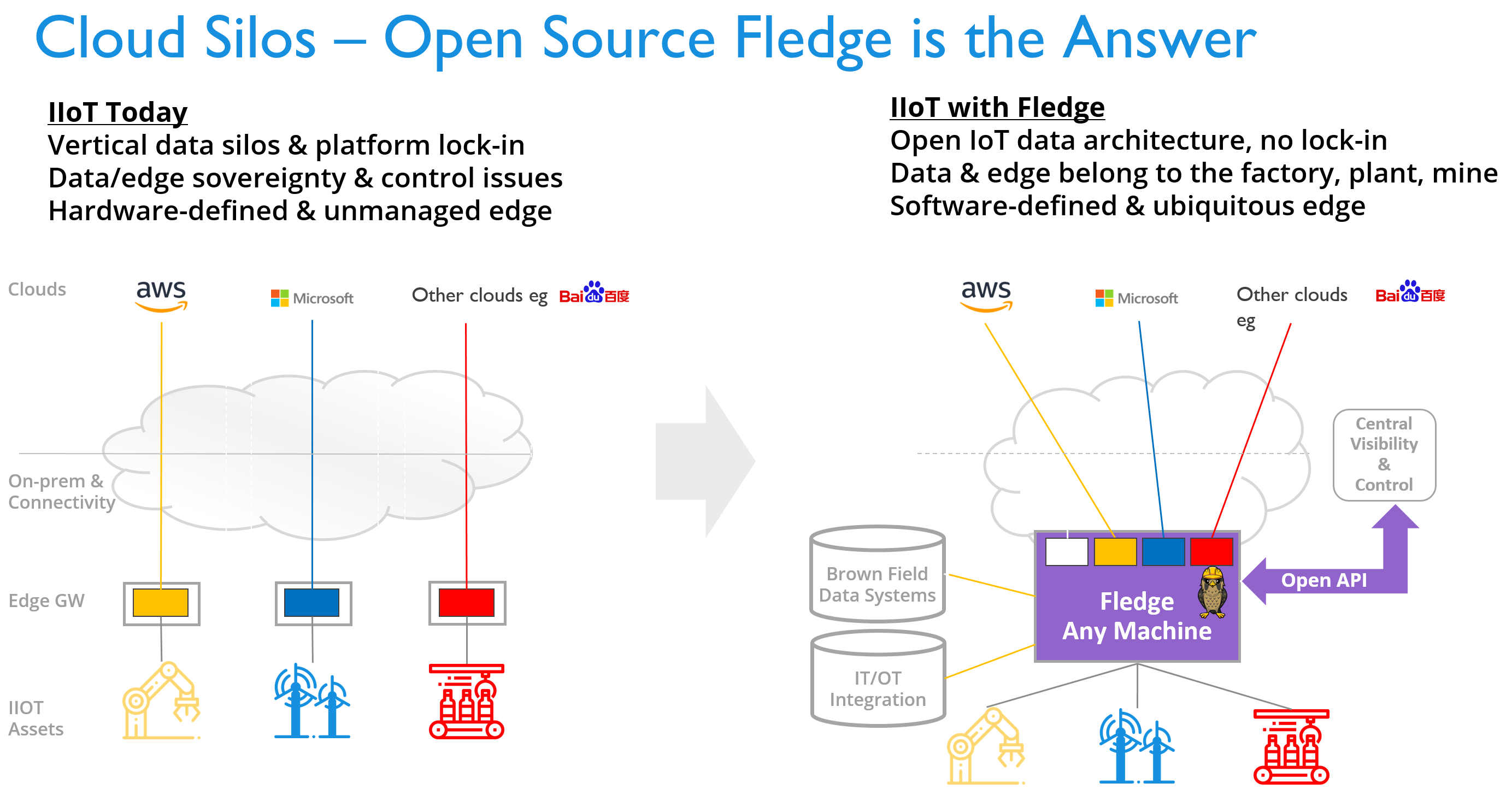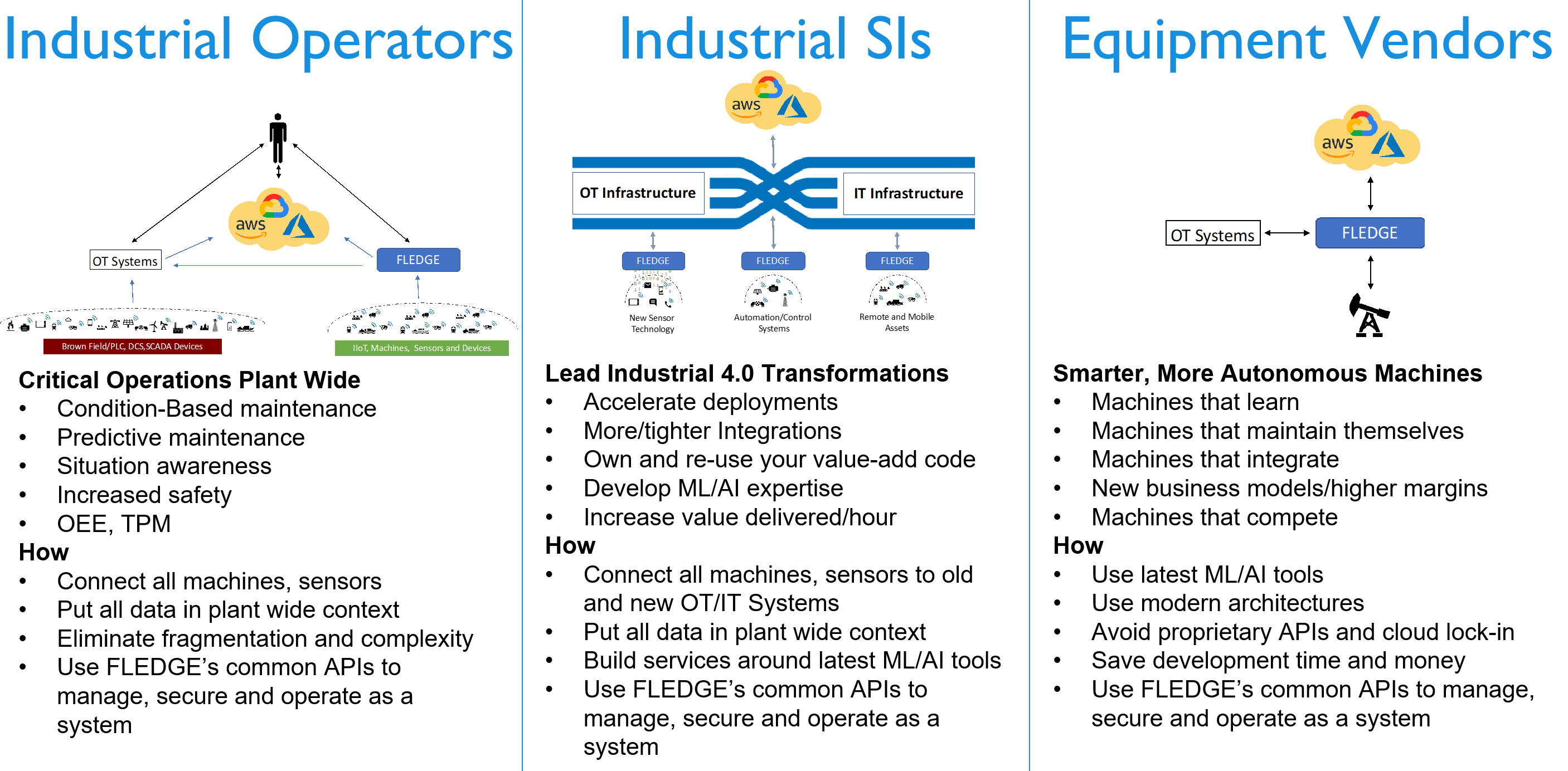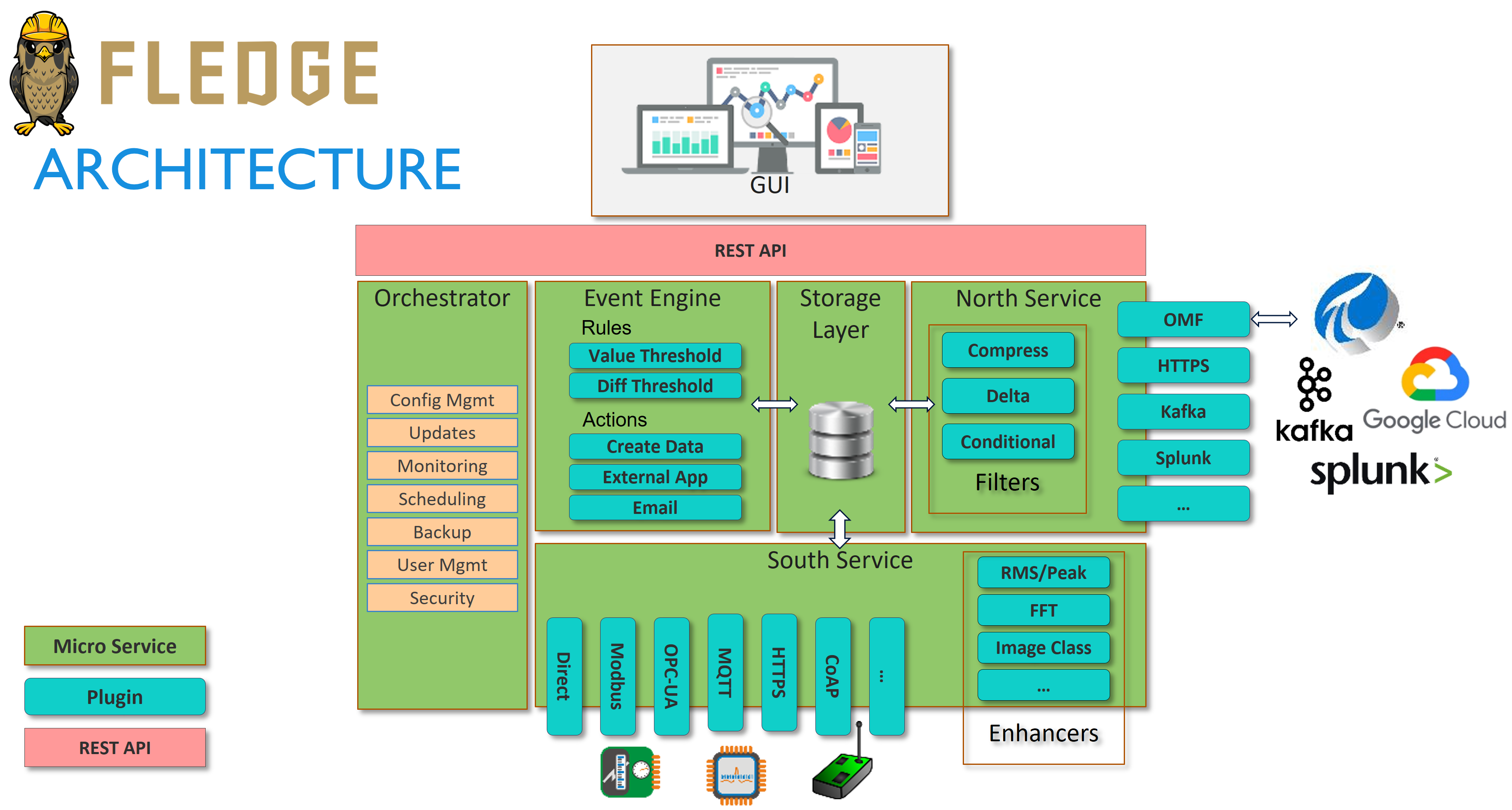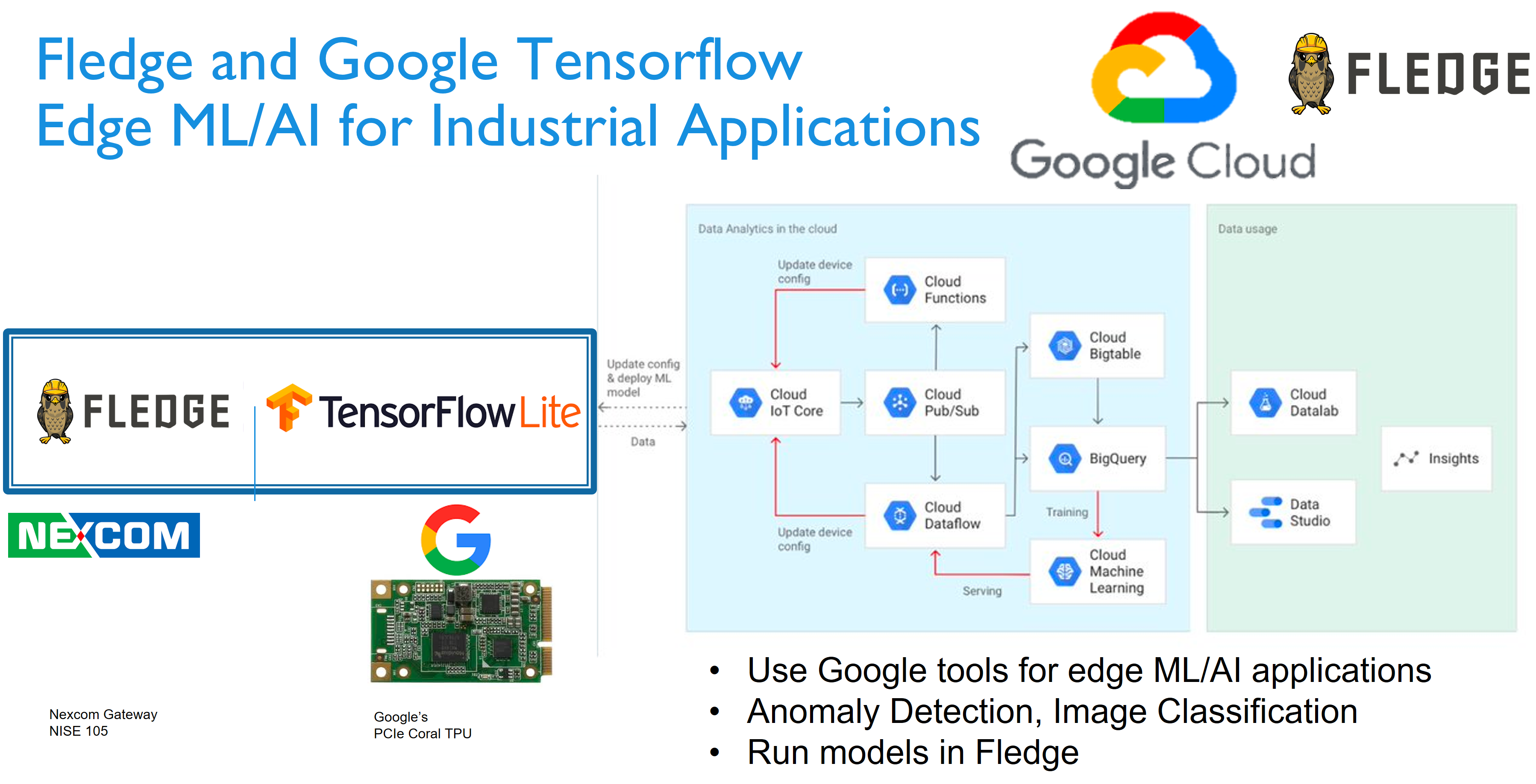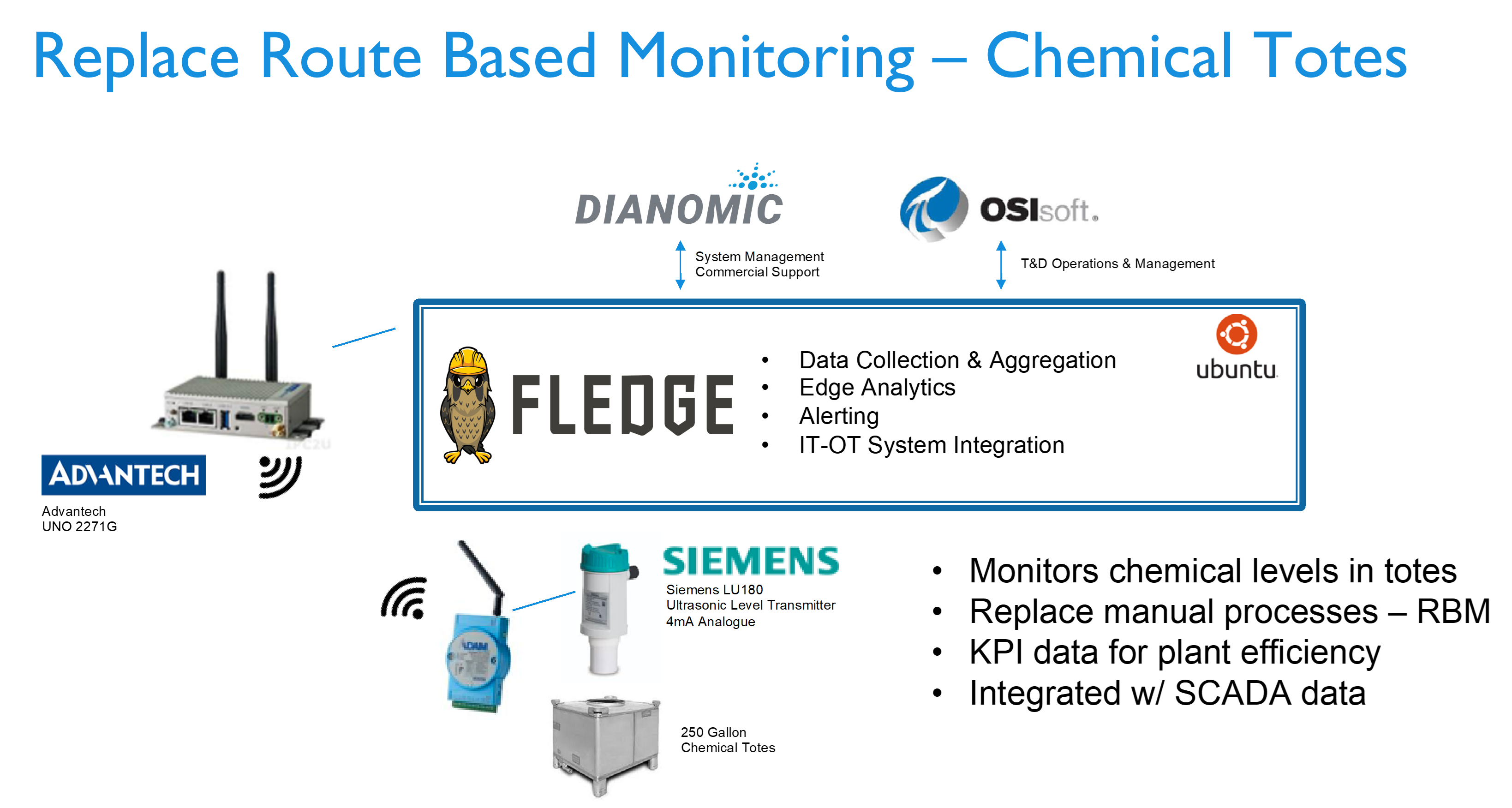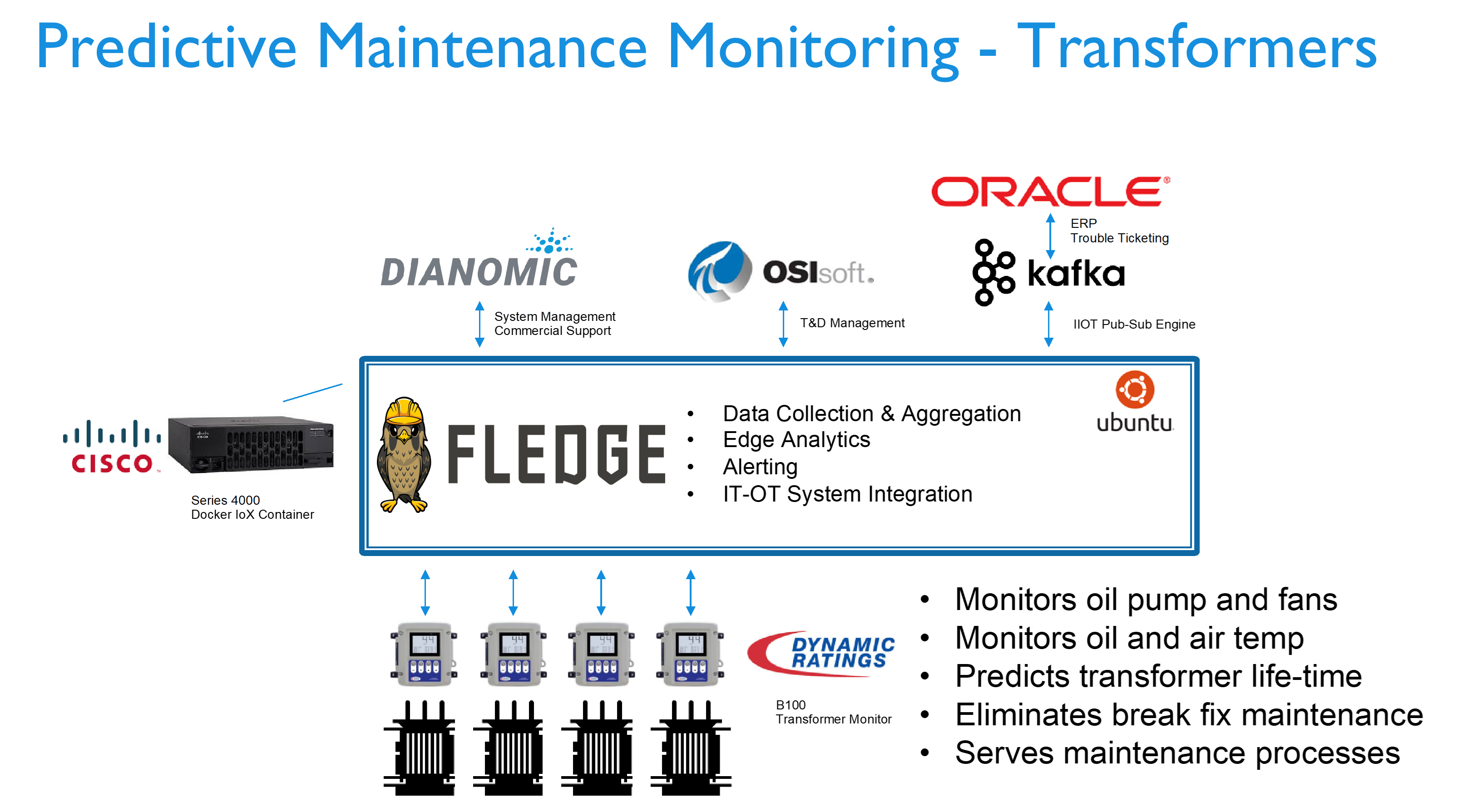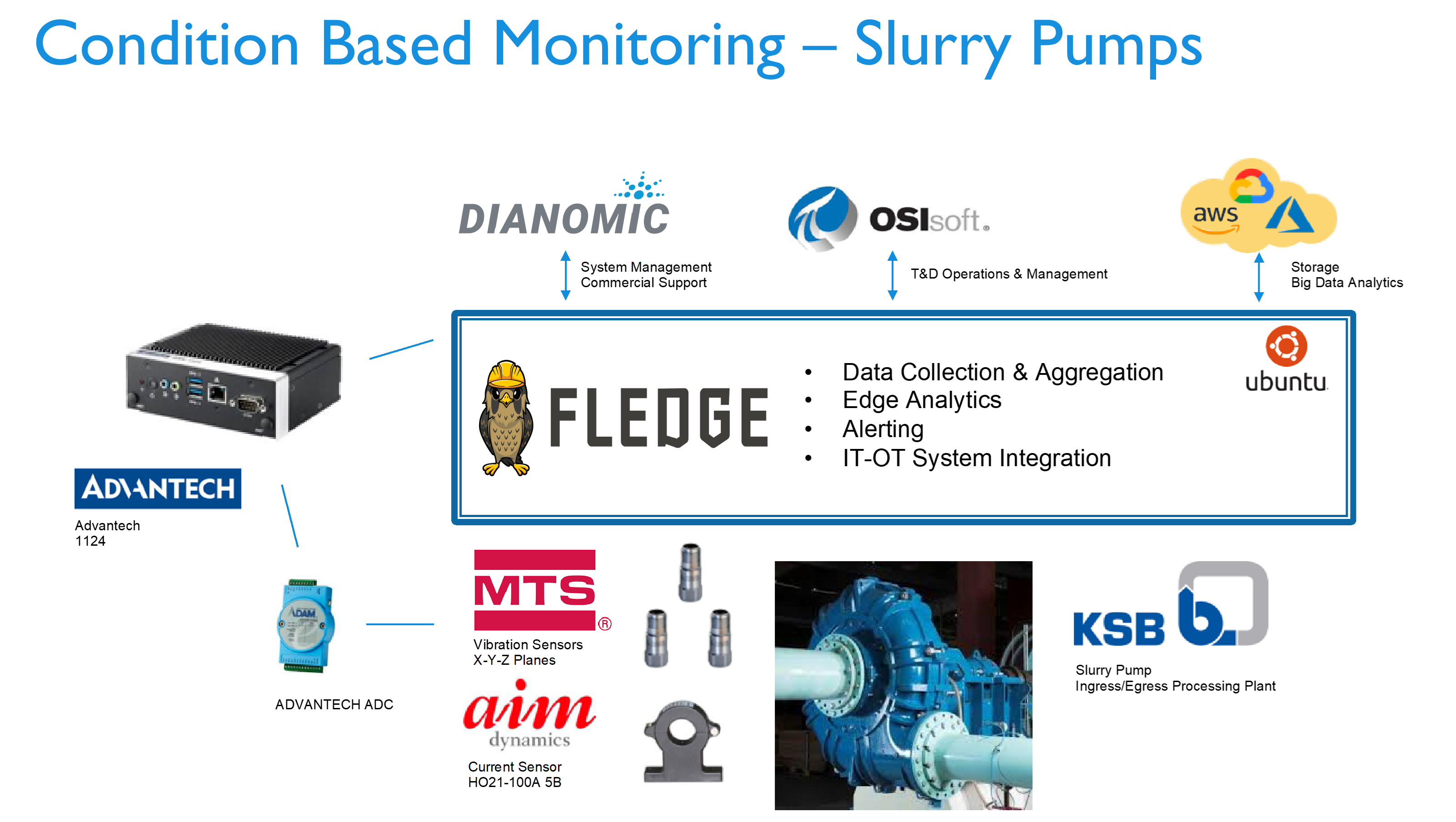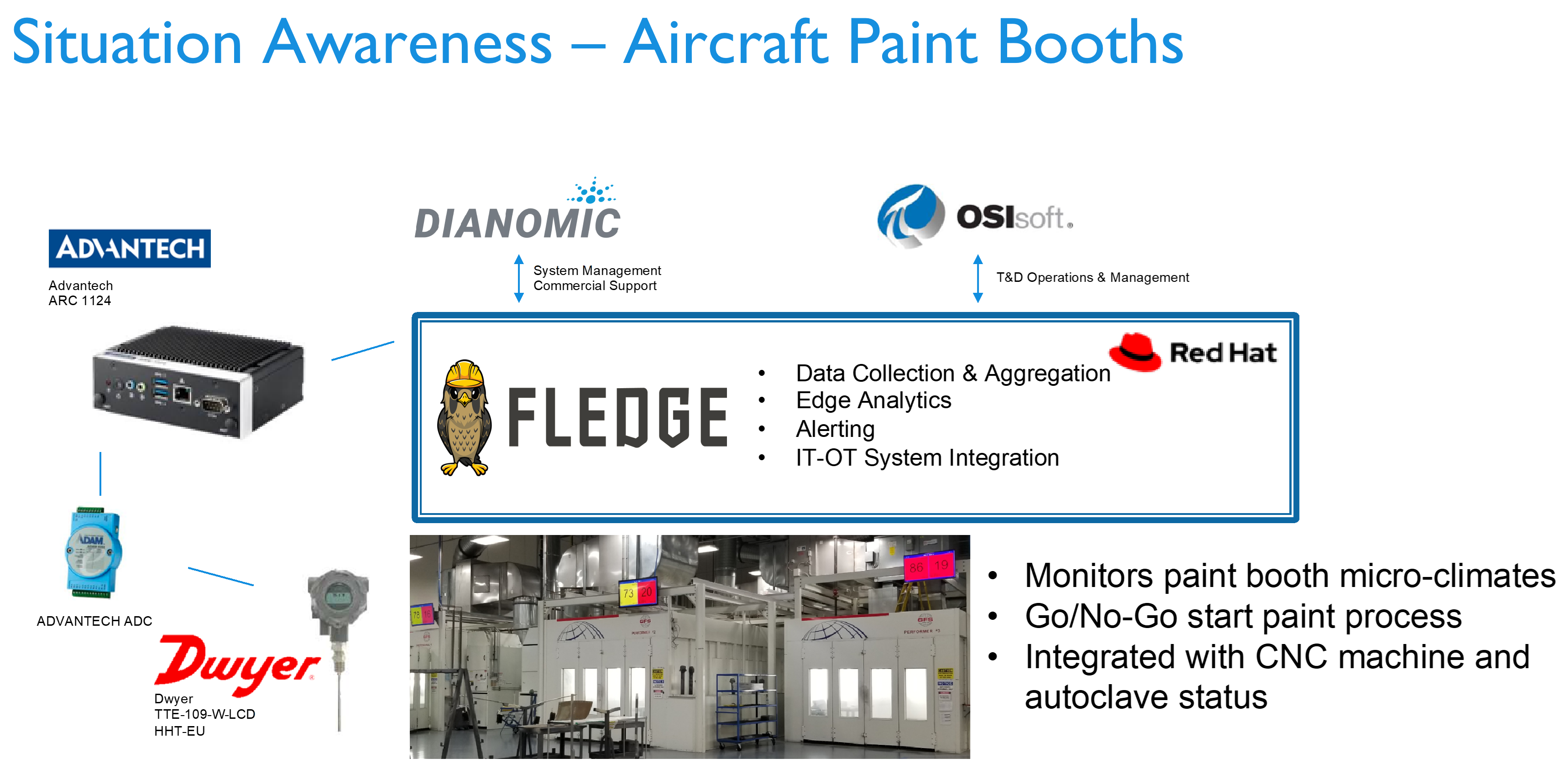Overview
Fledge is an open source framework and community for the Industrial Edge. Architected for rapid integration of any IIoT device, sensor or machine all using a common set of application, management and security REST APIs with existing industrial "brown field" systems and clouds. Fledge edge services include: Collect Data from any/all sensors, aggregate/combine/organize data. edge based alerting/anomaly detection/machine learning (TensorflowLIte, OpenVino), transform/filter data in flight, buffer data, analyze/visualize edge data, and deliver data to multiple local/cloud destinations.
Fledge developers and operators no longer face complexity and fragmentation issues when building their IIoT applications as they gather and process more sensor data to automate and transform business. Fledge’s modern pluggable architecture eliminates the data silos often found in plants, factories and mines. By using a consistent set of RESTful APIs to develop, manage and secure IIoT applications, Fledge creates a unified solution.
Architecture
Components in blue are plugins. Plugins are light-weight modules that enable Fledge to be extended. There are a variety of types of plugins: south-facing, north-facing, storage engine, filters, event rules and event delivery mechanisms. Plugins can be written in python (for fast development) or C++ (for high performance). Components in green are microservices. They can co-exist in the same operating environment or they can be distributed across multiple environments.
Fledge Core
Coordinates all of the Fledge operations. Only one Core service can be active at any time. Core functionality includes scheduling, configuration, monitoring, data APIs backup and restore, auditing, certificate storage, user management and asset data.
Storage Layer
Provides two principal functions: a) maintenance of Fledge configuration and run-time state, and b) storage/buffering of asset data. The type of storage engine is pluggable, so in installations with a small footprint, a plugin for SQLite may be chosen, or in installations with a high number of concurrent requests and larger footprint Postgresql may be suitable. In micro installations, for example on Edge devices, in-memory temporary storage may be the best option.
Southbound Microservices
Offer communication of data and metadata between Edge devices, such as sensors, actuators or PLCs and Fledge. Smaller systems may have this service installed onboard Edge devices. Southbound components are typically deployed as always-running services, which continuously wait for new data. Alternatively, they can be deployed as single-shot tasks, which periodically spin up, collect data and spin down.
Northbound Microservices
Offer bi-directional communication of data and metadata between the Fledge platform and larger systems located locally or in the cloud. Larger systems may be private and public Cloud data services, proprietary solutions or Fledge instances with larger footprints. Northbound components are typically deployed as one-shot tasks, which periodically spin up and send data which has been batched, then spin down. However, they can also be deployed as continually-running services.
Filters
Filters are plugins which modify streams of data that flow through Fledge. They can be deployed at ingress (in a South service), or at egress (in a North service). Typically, ingress filters are used to transform or enrich data, and egress filters are used to reduce flow to northbound pipes and infrastructure, i.e. by compressing or reducing data that flows out. Multiple filters can be applied in “pipelines”, and once configured, pipelines can be applied to multiple south or north services.
Event Engine
Maintains zero or more rule/action pairs. Each rule subscribes to desired asset data, and evaluates it. If the rule triggers, its associated action is executed.
REST API
The Fledge API provides methods to administer Fledge, and to interact with the data inside it.
Graphical User Interface
A GUI enables administration of Fledge. All GUI capability is through the REST API, so Fledge can also be administered through scripts or other management tools. The GUI provides:
- Health: See if services are responsive. See data that’s flowed in and out of Fledge
- Assets & Readings: analytics of data in Fledge
- South: manage south services
- North: manage north services
- Notifications: manage event engine rules and delivery mechanisms
- Certificate Store: manage certificates
- Backup & Restore: backup/restore Fledge
- Logs: see system, notification, audit logging information
Use Cases
Cross-LF Edge Collaboration
Fledge works closely with Project EVE, which provides system and orchestration services and a container runtime for Fledge applications and services. Together industrial operators can build, manage, secure and support all their non-SCADA, non-DCS connected machines, IIoT and sensors as they scale.
Fledge is also integrated with Akraino Edge Stack, as both projects support the roll out 5G and private LTE networks.
It also complements EdgeX Foundry on the industrial side. EdgeX has extensive control features, focused more where data management and integrated control are required and Fledge specifically works when data from brown field systems is not connected to the primary control systems (often serviced by RBM) and environmental/situational/safety sensors.
Contributed by Dianomic and formerly known as “Fog Lamp,” Fledge developers build smarter, better, more cost-effective industrial manufacturing solutions to accelerate Industrial 4.0 adoption.
Recent space activity

